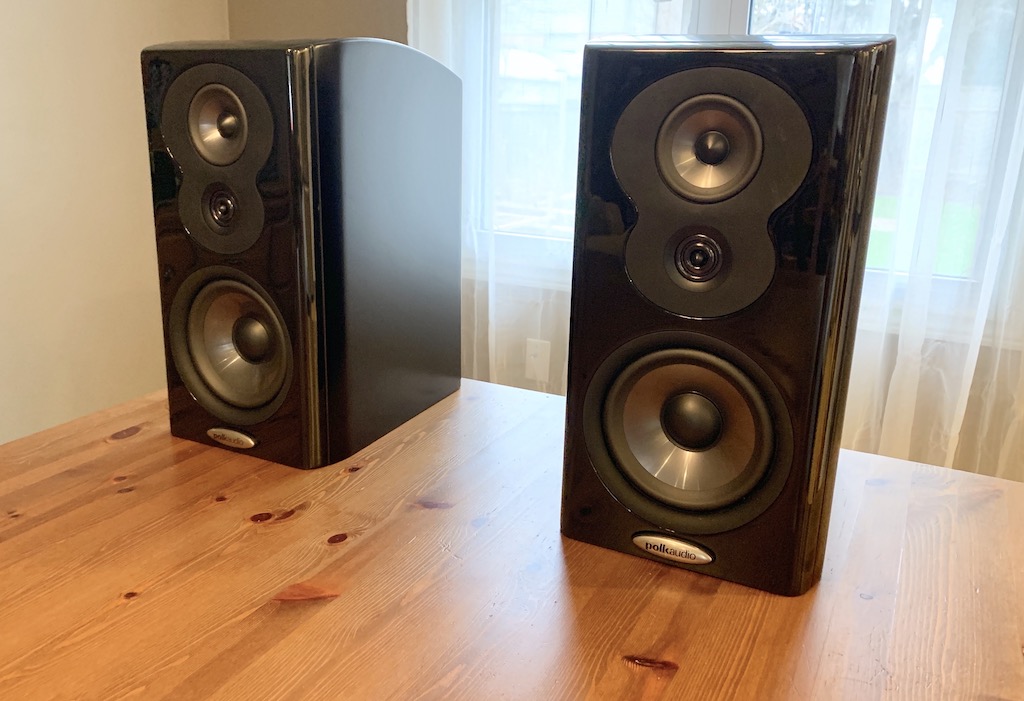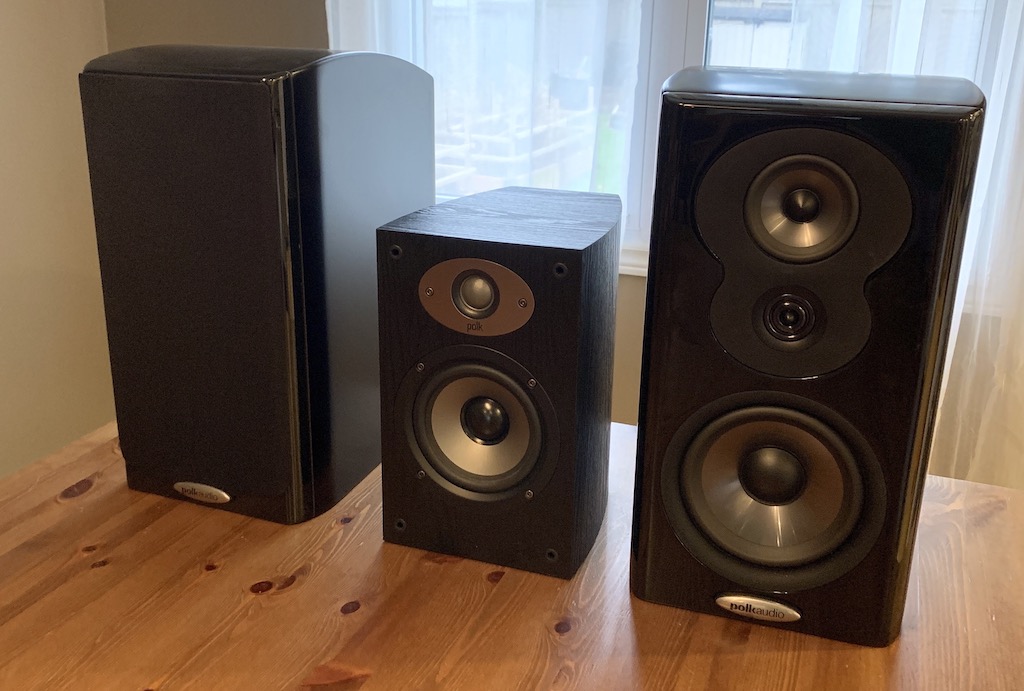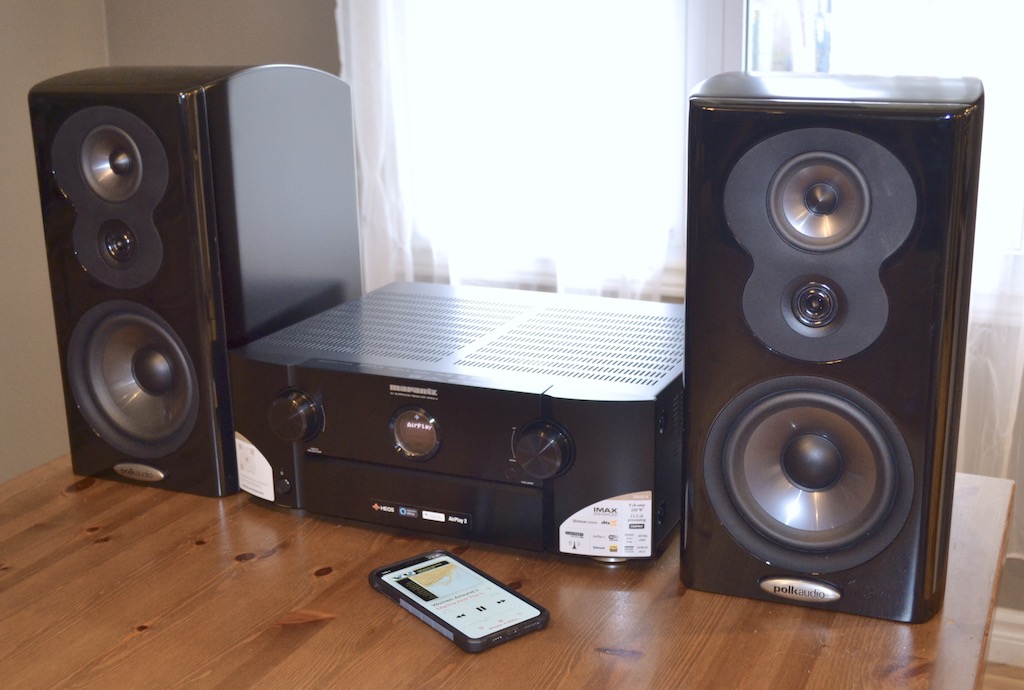
Polk Audio is one of those audio brands that needs no introduction. The American company has been making premium quality home audio speakers since 1972. I’ve been a long-time fan myself. Up until a few months ago the primary music system in my office was equipped with Polk bookshelf speakers and a Polk subwoofer. Earlier this year I tested out Polk’s Command Bar smart sound bar. And when the opportunity arose to try out the company’s LSiM 703 bookshelf speakers, I jumped at it.
LSiM series
The LSiM series is a collection of Polk speakers that share common traits. They use advanced new drivers including a ring radiator tweeter with extended dynamic range, Super Cell Aerated Polypropylene midrange drivers and PowerPort bass venting. Each is recognizable by its unique curved design that not only adds style, but also helps to eliminate resonance and improve audio performance. The LSiM series is designed to provide the ultimate home theatre audio experience. Speakers in this series include the LSiM 705 tower, the LSiM 704c centre channel and the model I tested, the LSiM 703 bookshelf speakers.
First impression: wow, these are big
When the courier delivered the review units, I thought the first box actually contained both the new Polk bookshelf speakers. It certainly felt like it. Then he went back to the truck for a second box …

The long and short of it is the Polk LSiM 703 are super-sized bookshelf speakers. And they are very, very heavy. I brought out my older Polk speakers for comparison. They are TSx110B two-way speakers and are right in the sweet spot in terms of traditional bookshelf speakers. They can physically fit on a standard bookshelf and are light enough that they can be easily wall-mounted as well. The LSiM 703 speaker physically dwarfs my old bookshelf speakers (as you can see in the photo above), and at 13.43kg (roughly 30 pounds) apiece, they weight about three times as much.
That being said, the LSiM 703 speakers are certainly attractive. Mine were finished in a midnight mahogany, with glossy fronts and magnetically attached speaker grills. Fit and finish were impeccable.
That extra space is put to good use
It may sound like I was complaining about the size of the LSiM 703 bookshelf speakers, but that was more a first impression shock. Realistically, I would put these on a stand and that would be the end of the “bookshelf” potshots.
And the thing is Polk made them this way for a reason. Most compact bookshelf speakers are two-way speakers—they have a tweeter and a mid-woofer. But Polk designed the LSiM 703 to be a three-way speaker. It’s equipped with a 1-inch tweeter, a midrange cone, and a mid-range woofer. And these aren’t just any old drivers. They are hallmarks of the LSiM series. The ring radiator tweeter hits higher notes, the Super Cell Aerated Polypropylene (or Super Cell APP) uses a honeycomb structure that makes it lighter and stiffer than traditional cones. A high-quality Orth crossover includes premium components like air-core inducers.
The extra weight? Polk makes extensive use of thick (up to 3.8 cm) audio-grade MDF and substantial internal bracing. The woofer is isolated in a separate chamber. The “Dynamic Sonic Engine” which is the tweeter and midrange driver are in a second chamber.
You can hear the results (more on that shortly), but you can also see them in the specs. My two-way bookshelf speakers have a frequency response of 53 Hz to 25 kHz. The LSiM 70s speakers have a far wider frequency response: 36 Hz to 40 kHz. They are capable of producing much lower lows and much higher highs.

The back of this speaker is as interesting as the front
The drivers on the front of the speakers are the eye candy, but the back of the LSiM 703 bookshelf speakers is just as interesting.
 An unusual panel sticks out for the back, with a cone that protrudes toward the bass port of the speaker. It looks like a 3D model of a black hole … This is the PowerPort bass venting shared with the other speakers in the LSiM series. Polk says it “promotes laminar airflow” which is another way of saying that it reduces the turbulence that occurs when the drivers push air out that bass port. Doing so reduces distortion and improves bass response.
An unusual panel sticks out for the back, with a cone that protrudes toward the bass port of the speaker. It looks like a 3D model of a black hole … This is the PowerPort bass venting shared with the other speakers in the LSiM series. Polk says it “promotes laminar airflow” which is another way of saying that it reduces the turbulence that occurs when the drivers push air out that bass port. Doing so reduces distortion and improves bass response.
These speakers are also equipped with two pairs of speaker posts instead of the usual one pair. This allows for advanced techniques like “bi-amping,” using a multi-channel receiver to allocate an entire channel of power to each pair of posts for superior audio.
Polk Audio LSiM 703 Speaker key specs:
|
Audio performance
Specs are one thing, but once I plugged the Polk LSiM 703 bookshelf speakers into a receiver (a 110W per channel Marantz), an emotional response took over. I love listening to music, and to put it simply these bookshelf speakers punch far above their considerable weight. They deliver a satisfying listening experience and stay composed even at (very) high volume. The three-way design means much more nuanced audio and a standard two-way setup. The ring radiator tweeter delivers crisp high notes, the midrange is detailed, and the bass has enough power and low-frequency response that I didn’t feel the need for a subwoofer.
That’s high praise for bookshelf speakers.
Top notch bookshelf speakers
Based on audio quality alone, the Polk Audio LSiM 703 bookshelf speakers are an easy recommendation. They sound great. I’d love to have a pair of these as part of a stereo setup with a receiver and a turntable. The bass performance is solid enough that I wouldn’t even bother with a subwoofer. Unfortunately, they’re simply too large for my office—and its bookshelves. And I suspect I’m not the only one who would run into space issues.

If you’re buying bookshelf speakers because you need something compact, then it doesn’t matter how great they sound, these may be too big for your available space. But if space isn’t a constraint, then you should check out the Polk LSiM 703 bookshelf speakers. Just don’t forget, they’re sold individually so you’ll need to pick up a pair.



